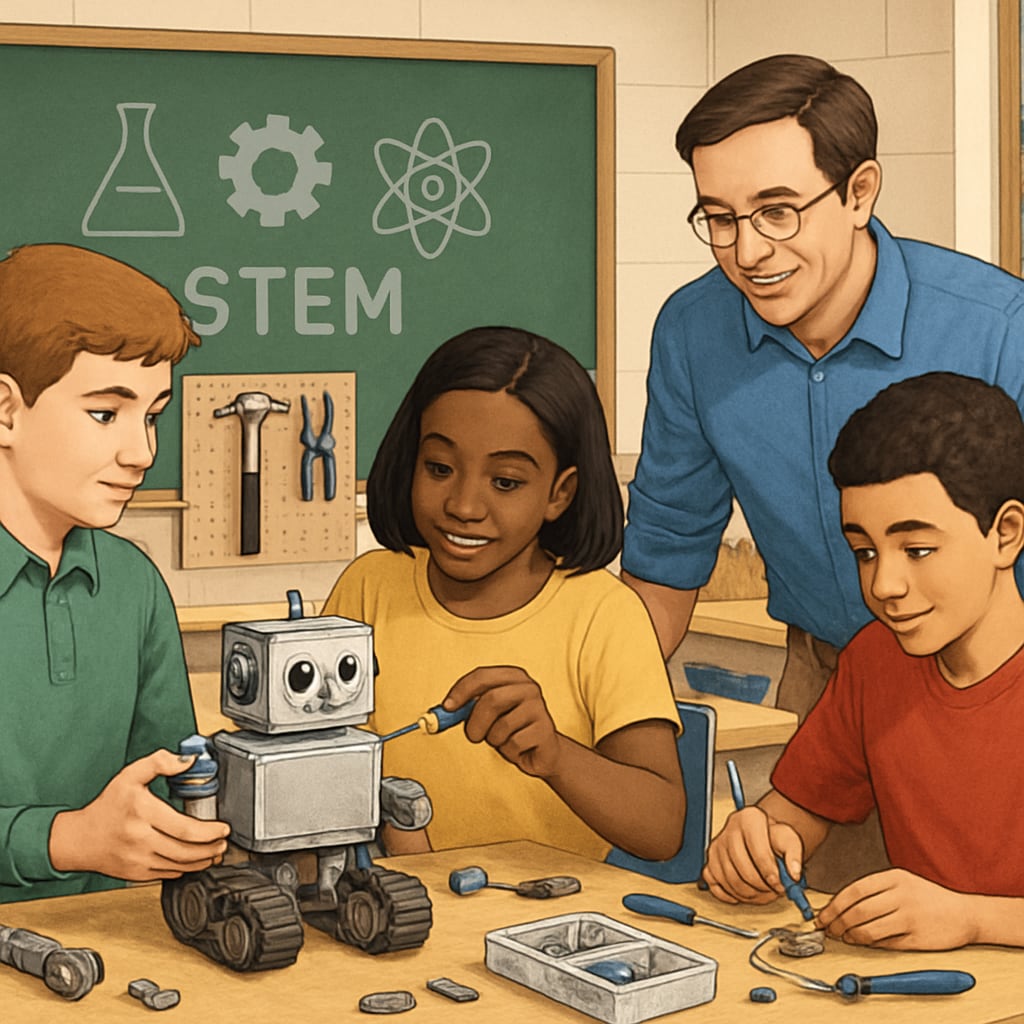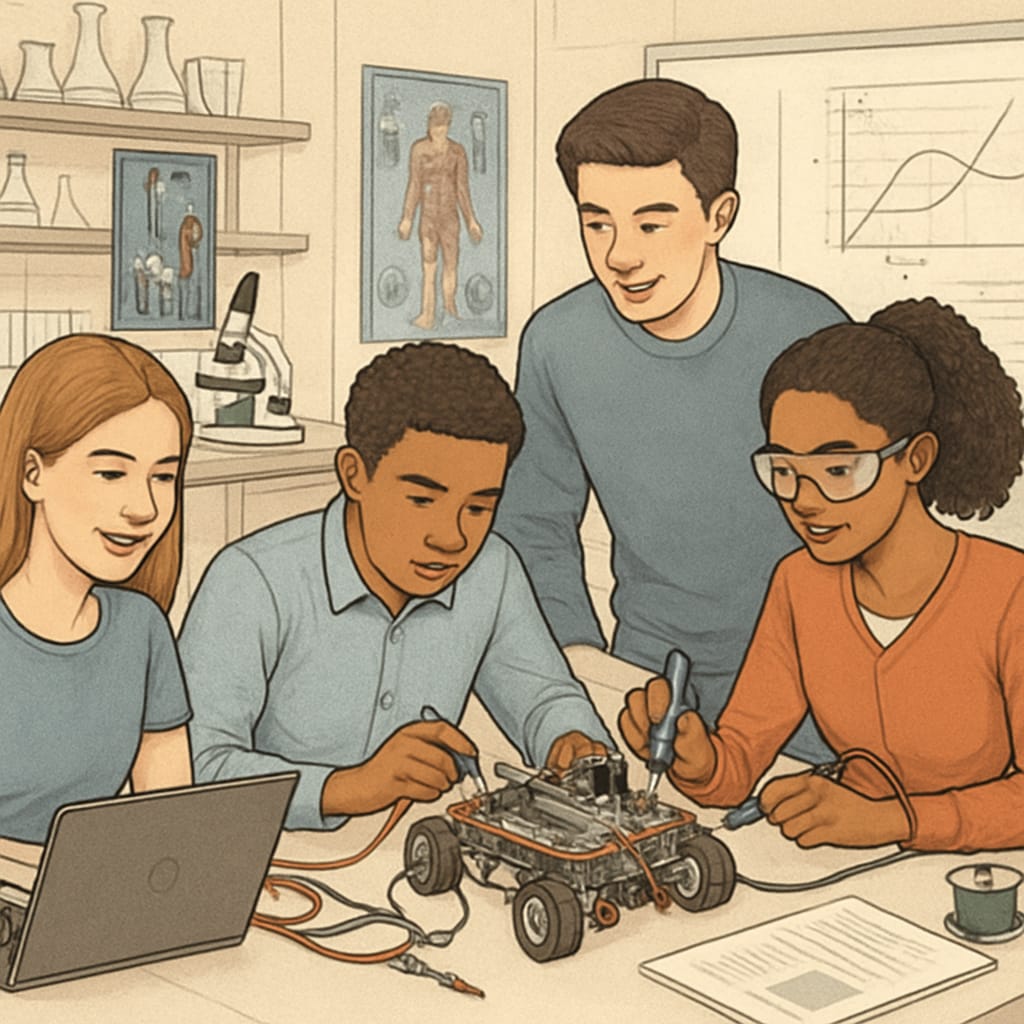In the evolving landscape of K12 education, balancing Career and Technical Education (CTE) with traditional academics has become an essential goal for many school districts. This combination not only equips students with practical skills but also ensures a strong foundation in core academic subjects. A well-structured education framework that integrates CTE and traditional academics can create a more comprehensive learning environment, preparing students for both career pathways and higher education. This article explores various implementation models, their effects on student outcomes, and actionable strategies for achieving this balance.
The Importance of Blending CTE and Traditional Academics
Career and Technical Education focuses on equipping students with hands-on skills and knowledge tailored to specific industries, such as healthcare, technology, and manufacturing. On the other hand, traditional academics emphasize critical thinking, problem-solving, and theoretical understanding through subjects like math, science, and literature. When these two approaches are combined, students receive a well-rounded education that prepares them for a variety of post-secondary opportunities.
For example, a high school senior studying engineering through a CTE program could simultaneously apply physics and mathematics concepts learned in traditional classes to real-world challenges. This integration ensures that students see the relevance of academic subjects in practical applications, which can enhance motivation and engagement.

Successful Models for Integrating CTE and Academics
Several school districts have piloted innovative programs to merge CTE with traditional academics. Below are a few effective models:
- Project-Based Learning (PBL): PBL integrates core academic subjects into CTE projects. For instance, students in a construction program might use geometry to calculate building dimensions or apply environmental science principles to create sustainable designs.
- Dual Enrollment Programs: These programs allow students to take college-level CTE courses while completing high school requirements. This approach often pairs industry-specific training with academic rigor, giving students a head start in their careers or post-secondary education.
- Interdisciplinary Collaboration: Teachers from CTE and academic departments work together to create joint curricula. For example, an English teacher might collaborate with a culinary arts instructor to teach students how to write professional menus or business proposals.
Each of these models emphasizes the importance of breaking down silos between academic and technical education, fostering a more cohesive learning experience for students.

Challenges and Solutions in Balancing CTE and Traditional Academics
Despite its benefits, integrating CTE and traditional academics presents several challenges, including resource limitations, teacher training, and curriculum alignment. Below are some common barriers and potential solutions:
- Funding Constraints: Many schools lack the financial resources to invest in CTE programs and equipment. To address this, schools can seek partnerships with local businesses or apply for grants from organizations that support workforce development.
- Teacher Expertise: Not all teachers are trained to blend technical and academic content. Professional development programs can help educators acquire the skills needed to create interdisciplinary lesson plans.
- Curriculum Alignment: Ensuring that CTE and academic curricula complement each other can be complex. Schools can overcome this by forming cross-departmental committees to identify overlapping content and opportunities for integration.
By proactively addressing these challenges, schools can create a more balanced and effective educational structure.
Building a Comprehensive Educational Ecosystem
To fully integrate CTE and traditional academics, schools must adopt a holistic approach that involves all stakeholders, including educators, parents, students, and industry partners. Below are key steps to build a comprehensive educational ecosystem:
- Conduct Community Needs Assessments: Understand the local job market and educational landscape to design CTE programs that align with regional economic opportunities.
- Engage Industry Partners: Collaborate with businesses to provide internships, mentorships, and real-world learning experiences for students.
- Foster Parental Support: Educate parents on the value of CTE and its role in preparing students for modern careers.
- Leverage Technology: Use digital tools to enhance both academic and technical instruction, such as virtual labs or industry-specific simulations.
By implementing these strategies, schools can create a balanced educational structure that meets the diverse needs of students and communities.
In conclusion, achieving a balance between Career and Technical Education and traditional academics is crucial for preparing students for the challenges of the modern world. While the process requires careful planning and collaboration, the benefits—such as increased student engagement, improved academic performance, and stronger career readiness—are well worth the effort.
Readability guidance: The article employs short paragraphs, structured lists, and an active voice to enhance readability. Transition words like “for example,” “therefore,” and “in addition” are used throughout to ensure smooth flow between ideas.


